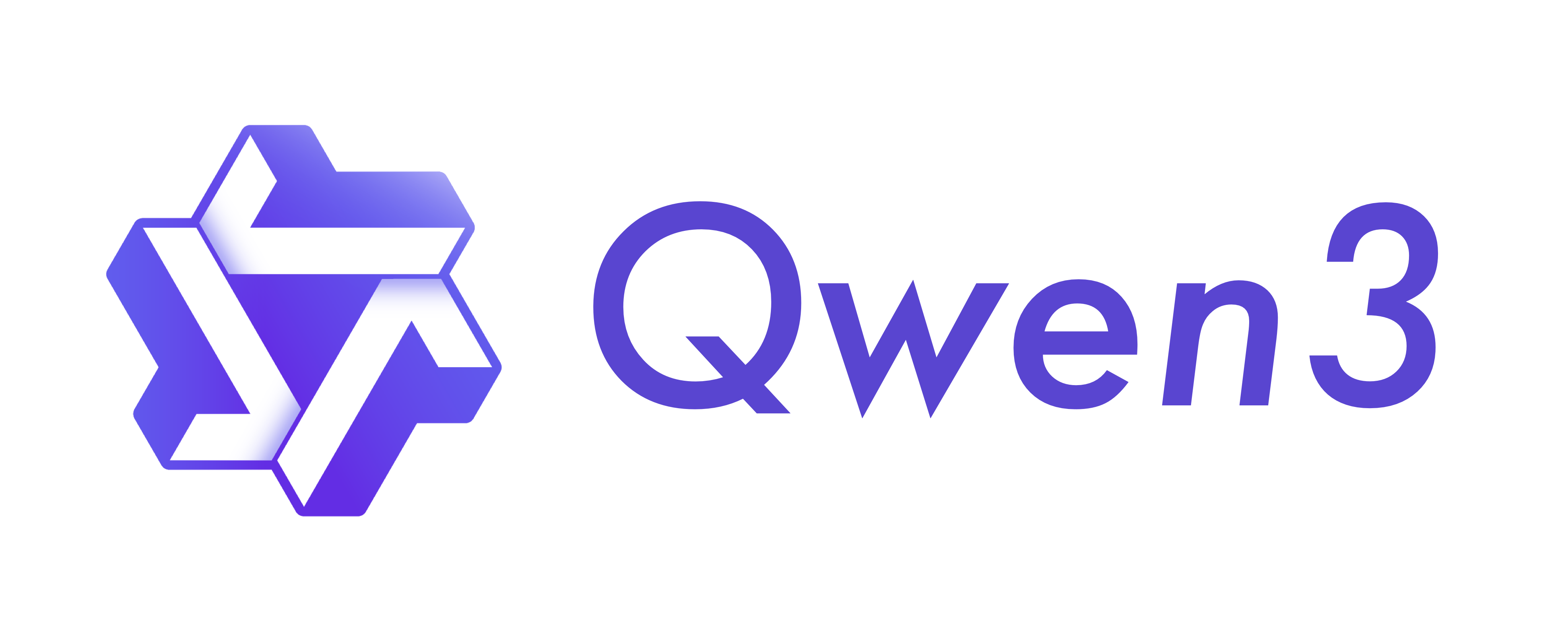
Qwen: Powerful AI Models for Multimodal Tasks

Theodoros Dimitriou
September 4, 2025 • 4 min read • AI Tools

🤖 Meet Qwen: Multimodal Intelligence for Real Apps
Hey folks, Theo here. If you’re building modern apps that need to understand text, images, or audio, Qwen is a family of AI models you’ll want on your radar. It’s not just another LLM — Qwen includes variants for vision, audio, and coding, with strong reasoning and multilingual capabilities that have been improving rapidly across releases like Qwen3.
What stands out is how many models are available as open-weights, making it practical to experiment locally or self-host without huge costs. Qwen has ranked highly across benchmarks and is competitive with top-tier models — great news if you’re integrating AI into real products.
🧠 Why Qwen Stands Out
- 🌍 Multilingual Reach: Handles a wide range of languages and dialects — ideal for global products.
5 - 🖼️ Multimodal Understanding: Variants like Qwen‑VL (vision-language) and Qwen‑Audio unlock image and audio workflows.
3 5 - 🧩 Long Context + Reasoning: Advanced reasoning (e.g., Qwen3‑Coder) and long context windows for complex tasks.
3 - 🛠️ Agentic & Tool Use: Built to call tools and handle multi-step tasks in agent workflows.
5 - 🆓 Open-Weight Options: Many models are available under permissive licenses, enabling on-prem and edge deployments.
4
🧬 Model Lineup at a Glance
- Qwen3 (Base): General-purpose language model for chat, reasoning, and planning.
3 - Qwen‑VL: Vision‑language model for understanding and generating descriptions from images and mixed media.
3 - Qwen‑Audio: Speech and audio understanding for transcription, analysis, and voice interactions.
5 - Qwen‑Coder: Code-focused variant for generation, refactoring, and reasoning about repositories.
3 - Qwen‑Image: Image generation and editing via text prompts for creative workflows.
5
Fun fact: newer releases highlight hybrid “thinking modes” to balance speed and depth — handy when you need quick drafts vs. deliberate reasoning.
🚀 Getting Started (Step‑by‑Step)
Pick Your Variant. Start with Qwen3 for chat/reasoning; use Qwen‑VL for images or Qwen‑Audio for speech.
3 5 Access via API or Open Weights. Call cloud APIs or download weights (e.g., from model hubs) and run locally.
4 Start with Text. Prompt for summaries, Q&A, or brainstorming to validate behavior.
Add Multimodal Inputs. Feed images or audio where relevant — e.g., product photos for captioning or voice notes for action items.
3 Tune for Your Use Case. Use system prompts, few-shot examples, and structured outputs (JSON) for reliability.
💡 Tip: Experiment with the hybrid thinking modes to trade off latency vs. accuracy depending on your flow.
📸 Practical Use Cases You Can Ship
- Smart Assistants: Chatbots that understand documents, images, and short audio clips for support workflows.
3 - Image Captioning & Insights: Use Qwen‑VL to describe products, detect attributes, and suggest tags for e‑commerce.
5 - Voice Notes → Tasks: Process meeting recordings with Qwen‑Audio to extract action items and decisions.
5 - Coding Agents: Pair Qwen‑Coder with repository context to generate tests, refactor modules, and explain diffs.
3 - Creative Imaging: Generate or edit visuals with text prompts for campaigns and mockups.
5
🧪 Pro tip: Start with narrow scopes (one doc type, one image category, one repo), measure outputs, then expand. This keeps costs predictable and quality high.
🛡️ Deployment, Cost, and Licensing
One of Qwen’s strengths is flexibility: you can consume fully managed APIs for speed, or deploy open-weight variants on your own infrastructure for privacy and control. Many models are released under permissive terms suitable for commercial use.
For production, consider a hybrid approach: use cloud for bursty workloads and a local node for steady tasks. Add caching, rate limits, and guardrails for safe, predictable behavior.
✨ Best Practices
- Ground with context: Provide relevant docs, examples, or schemas to anchor responses.
- Prefer structured outputs: Ask for JSON and validate strictly before acting.
- Control context length: Chunk inputs and summarize to avoid costly prompts.
- Evaluate regularly: Track quality across representative samples; iterate prompts and policies.
- Safety first: Add filters, allowlists, and human-in-the-loop for sensitive actions.
🔮 Final Thoughts
Qwen is a versatile, fast-moving model family that’s practical for real products — from chat assistants to multimodal content tools. I’m excited to keep experimenting and ship more AI-powered features. Have you tried Qwen yet? Drop your experiences and ideas below — I’d love to hear them! 🚀
Share this post
Help others discover this content by sharing it on your favorite social networks!
Subscribe to my Newsletter
Stay informed with the latest updates and insights.

Theodoros Dimitriou
Senior Fullstack Developer
Thank you for reading my blog post! If you found it valuable, please consider sharing it with your network. Want to discuss your project or need web development help? Book a consultation with me, or maybe even buy me a coffee ☕️ with the links below. Your support goes well beyond a coffee drink. Its a motivator to keep writing and creating useful content.
You might also like
Kimi K2 Thinking: Open‑Source Reasoning Hits the Frontier
Moonshot AI’s Kimi K2 Thinking pushes open‑source reasoning to frontier‑level benchmarks with tool-augmented performance, fast INT4 inference, and real-world agentic coding gains.
Nvidia's AI Empire: How Jensen Huang Built the Future of Computing
Grokipedia went Live yesterday
xAI launches Grokipedia (beta v0.1), a Grok-powered encyclopedia with 885k+ articles and real-time fact-checking — raising big questions about neutrality vs. speed.
Gemini Enterprise: The New AI Business Experience
Google unveils Gemini Enterprise at their Gemini at Work event, promising to revolutionize workplace AI beyond simple chatbots with a comprehensive platform that integrates company data, tools, and people.